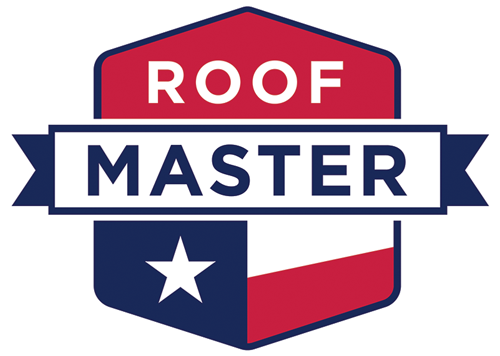Valley flashing can be a well-known entry for leaks, and that is why it is advisable to know how to install valley flashing on roofs. When the contractors poorly install the valley flashing, water can go down the shingles, resulting in leaks.
There are many types of metal flashing, but the most common type is steel. This is because it has many beneficial characteristics, like being easy to clean and cost-effective. Other materials are copper, aluminum, and alloy steel.
Things You Should Know About Roof Flashing
Although roof flashing is an essential part of the roof, not all roofs need them. The type of your home’s roof will be a factor to consider whether to install a roof flashing or not. If you are wondering why a roof flashing is essential, here are some reasons.
It Adds Protection To Parts of the House
The primary reason for installing a roof flashing is to enable water to flow away from vulnerable areas to avoid leaks. Some of these weak areas are where the shingles or the roofing sheets meet, like the chimney or wall.
If you don’t do the flashing well or use a poor-quality flashing material, you will experience leak problems. If you are not sure of the best flashing material to choose or the best installation method, Roof Masters will hook you up with a professional roofer.
You Might Not Need a Roof Flashing Replacement When Installing a New Roof
Whether you will need a new flashing when replacing your roof or maintain the one you have depends on your current flashing condition. A roofing professional will advise whether to replace it when they come to inspect.
If there are no signs of damage, the roofer will install the old flashing on the new shingles. However, if you want to add curb appeal, you can also purchase a new flashing. Another case you will replace the flashing is if you are changing the entire roof.
You should Monitor Your Flashing Yearly
Your roof’s flashing plays a significant role in protecting your house from ceiling leaks. It is due to this reason you should carefully choose suitable materials and a good installer for the flashing.
In addition, to keep the flashing in the perfect condition for better functioning, you should also inspect it annually. During the inspection, you can remove any dirt and dust that could hinder the functioning of the flashing. This also lengthens its lifespan.
Some Factors Contribute To the Functioning of the Flashing
It is essential to know that all the flashing will not function the same. Therefore, some factors like the material of the flashing are necessary to consider when buying.
You should also ensure you get a good installer because an expensive, good-quality flashing will not function as it should if you don’t install it correctly. Our roofers are well experienced, and you will not regret choosing to work with them.
How to Install Roof Valley Flashing
Now that you know what roof flashing does, you need an experienced installer to ensure it doesn’t leak. But first, let’s look at how to install a valley flashing on a metal roof.
To begin with, you should have all the necessary tools ready. Some of them are a nail gun, measuring tape, roofer’s hatchet, a chalk line, caulking gun, utility knife, and straightedge and tip snips. Having these assembled will enable you to do the job faster.
Step 1: Install the Shingles
You will start by installing the underlayment and then the flashing. With the flashing in place, install shingles on both sides of the flashing.
Do not drive nails anywhere into the flashing. After the installation, cut the shingles parallel to the center of the flashing. Mark the cuts using a chalk line.
Step 2: Cut and Shape the Shingles
Protect the flashing with a sheet of metal underneath to ensure you don’t damage them. A utility knife will come in handy when cutting the shingles along the chalk line.
Step 3: Take Care of the Corners
The corners can be a bit challenging to work on, so you should be careful not to get them wrong. Instead, use a hook blade to cut the pointed unexposed ends of the flashing.
Step 4: Caulk the Surface
Apply caulk between the shingles and the flashing twice. Also, run a bead of roofing cement beneath the shingles. Finally, put the cement in a caulk tube with a tip. All these processes will get easier as you learn how to install valley flashing on a metal roof.
Apply the roofing cement on the shingles to ensure they adhere to each other. This ensures no chance left for water leaks and attaches the shingles without the need to use nails. Nails leave tiny holes that can allow water in.
Step 5: Place the Shingles
Run shingles on one side of the valley, and use one and two tab shingles as you near the valley. This ensures full-size shingles run across the depression. Repeat this on the other side and snap a chalk line 3 inches past the valley center.
Step 6: Cut the Shingles
Trim the shingles that lay along the chalk line and slide a metal flashing underneath the top layer of the shingle. This ensures you don’t get to the bottom of the valley using a hook blade, leading you to cut the shingles.
Step &: Cut the Corners
Again, corners are cumbersome to deal with and need special attention. Ensure you cut the top layer shingles and bind the top and bottom shingles with two beads of roofing cement. Attach the top layer shingles with the roofing cement.
Step 7: Weave the Shingles
Use full-size shingles to weave. Ensure they lap across the valley onto the other side. Cross the center using single or double-tabbed shingles.
Final Words
Installing a valley flashing is a straightforward process, but you will suffer leakage as a consequence if you miss a step or do it wrongly. If you are not sure about how to install valley flashing, our experienced roofers will help you. All you have to do is contact us.



